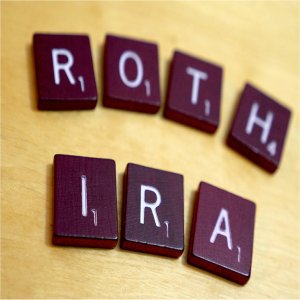3 Reasons Why a Roth IRA is the Cherry on Top of Your Retirement Cake Sponsored By:Rick Viader

Baking is a healthy metaphor for increasing your retirement savings. The money you set aside for your future is analogous to the raw ingredients in a cake. The securities (stocks, shares, mutual funds, and so on) in which you invest your money are like the oven that transforms those raw ingredients into something that can feed you later. And the account in which you keep your savings is the cherry on top of the cake, the little bit of tax-advantaged sweetness that sets it all off.
The "cherry" on top for many people is the Roth IRA. These accounts have some unique features, listed below, that can help you stretch your dollars much further.
1. Retirement withdrawals from a Roth IRA are tax-free
The main advantage of Roth IRAs is that you can withdraw your money tax-free as long as you obey certain laws and pay taxes on your contributions in the year you make them. This makes managing your tax liability in retirement simpler.
For example, if it's nearing the end of the year, and you find you're approaching the top of your tax bracket, you can remove funds from your Roth IRA to prevent increasing your taxable income and owing the government even more.
Roth IRAs are typically recommended for young employees and others who believe they will earn the same or less than they think they will spend per year in retirement. Since these employees can end up in a higher tax bracket in retirement than they are now, giving the government a small portion of their contributions today is typically the smarter financial move.
Assume you earned $50,000 as a single adult last year and contributed 10% of it, or $5,000, to your retirement account. You're retiring this year and plan to spend $54,000 to pay for your expenses, plus some extra for traveling. If you had contributed to a Roth IRA last year, you would have paid taxes on the entire $50,000 you received, minus the standard deduction and any other tax breaks you are eligible for. This year, though, you will not owe taxes on any of the $54,000 you spent from your Roth IRA if you withdrew all of it.
If you had invested in a traditional IRA instead, you would have received a $5,000 tax break last year. However, if you took the $54,000 this year, you'd owe taxes on nearly all of it. If you just claim the standard deduction and no other tax breaks this year, the additional $4,000 you spent is enough to move you from the 12 percent tax bracket to the 22 percent tax bracket. So, not only will you owe more taxes than last year, but you'll also owe a much higher percentage of your earnings.
2. Fewer troubles for early retirees
You'll normally have to pay a 10% early withdrawal penalty if you take money out of your retirement account before you're 59 1/2 years old. However, there are a few exceptions, such as Roth IRA contributions. You've already paid taxes on these funds, so you can take them out whenever you want with no repercussions from the government.
For employees who plan to retire by the age of 59 1/2, this makes them a perfect addition to their other retirement accounts. They can still take advantage of the tax benefits of investing in a defined retirement account while avoiding penalties for using their own money.
If you've made enough contributions to your Roth IRA over the years, you can use these funds solely to cover your retirement expenses until you turn 59 1/2 and can access your other savings without penalty. You may use these funds to cover an emergency cost at any age, but having a designated emergency fund is better for that.
It's worth noting that not all Roth IRA withdrawals are free of penalties. Unless you have a valid reason, such as a big medical or educational cost, you can't touch your earnings until you're 59 1/2. Even if you're already 59 1/2, you must leave all Roth IRA conversions alone for at least five years before withdrawing them.
3. There are no required minimum distributions (RMDs)
Required minimum distributions (RMDs) are regular withdrawals from retirement accounts that most people must make starting at the age of 72. However, Roth IRAs are the only accounts excluded from this rule. So, you can leave your Roth IRA funds to grow for as long as you want before you need them.
It also enables you to make a significant tax-free gift to your descendants if you do not need all of the money you have saved during your lifetime. Unless you give the money to your partner, your heirs will have to take RMDs, but it will not increase their tax bill.
Different people like different things
Although Roth IRAs have undeniably great advantages, they are not the best option for everyone. Their low contribution caps – $6,000 in 2021 or $7,000 if you're 50 or older – limit those who want to save a lot of money for retirement every year.
They could also be the wrong option for someone who earns far more today than they anticipate spending in retirement. Traditional IRAs are preferable for these people because they may end up in a lower tax bracket in retirement, so deferring taxes until then will help them save money.
Everyone has their tastes, just as in baking, so you must ultimately know what works best for you right now and stick with it. You can always add a Roth IRA down the road if you don't think it's a good fit at the moment, or you can move to another retirement account later. It all boils down to what is best for you.







